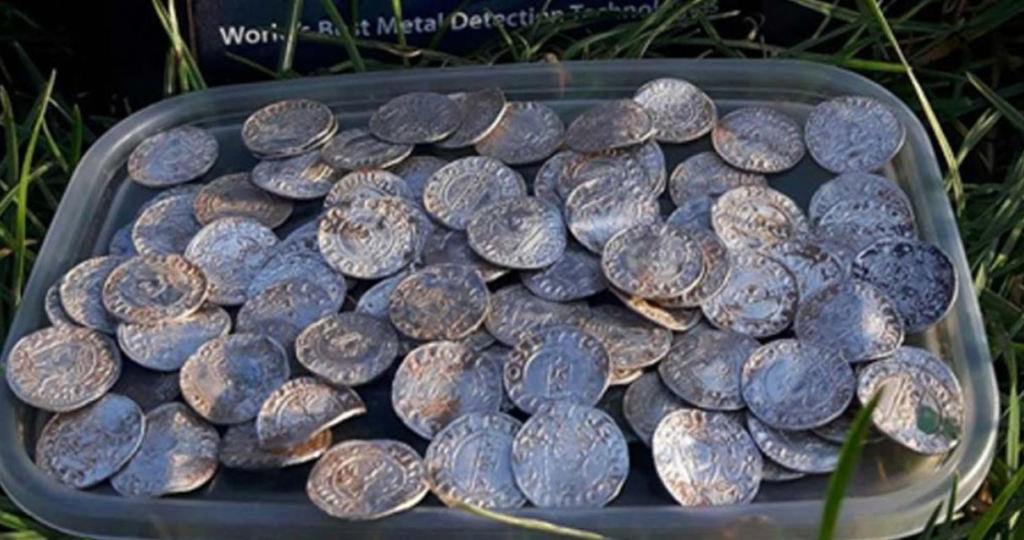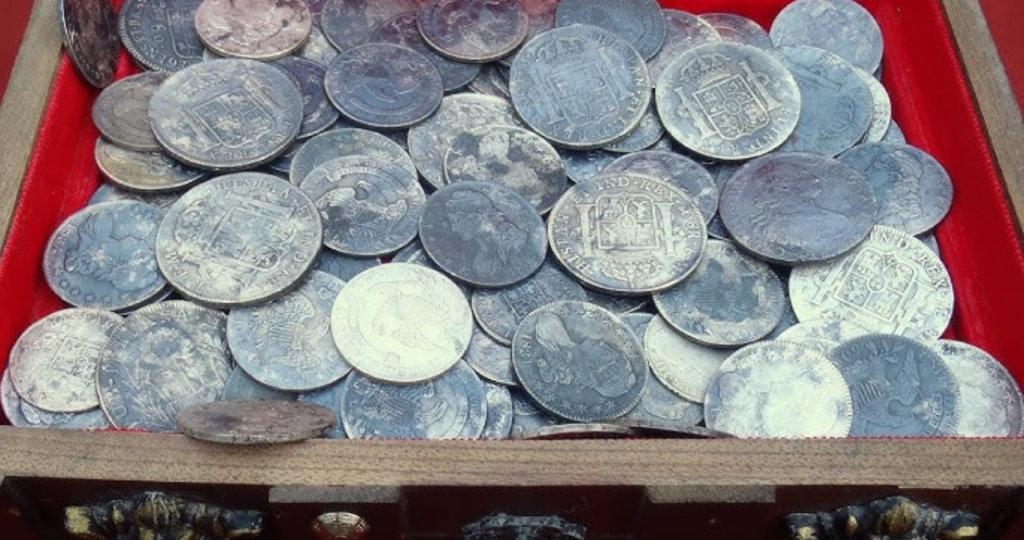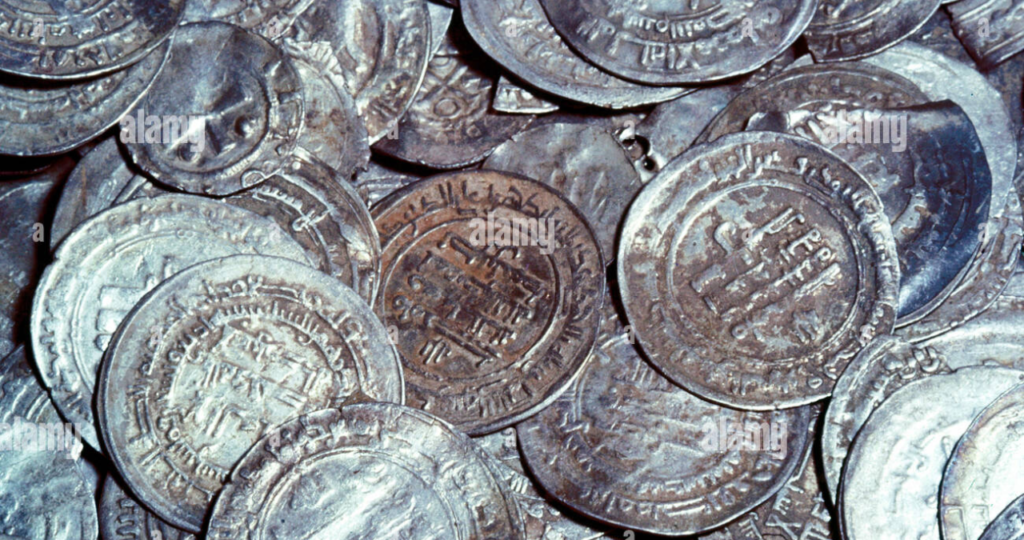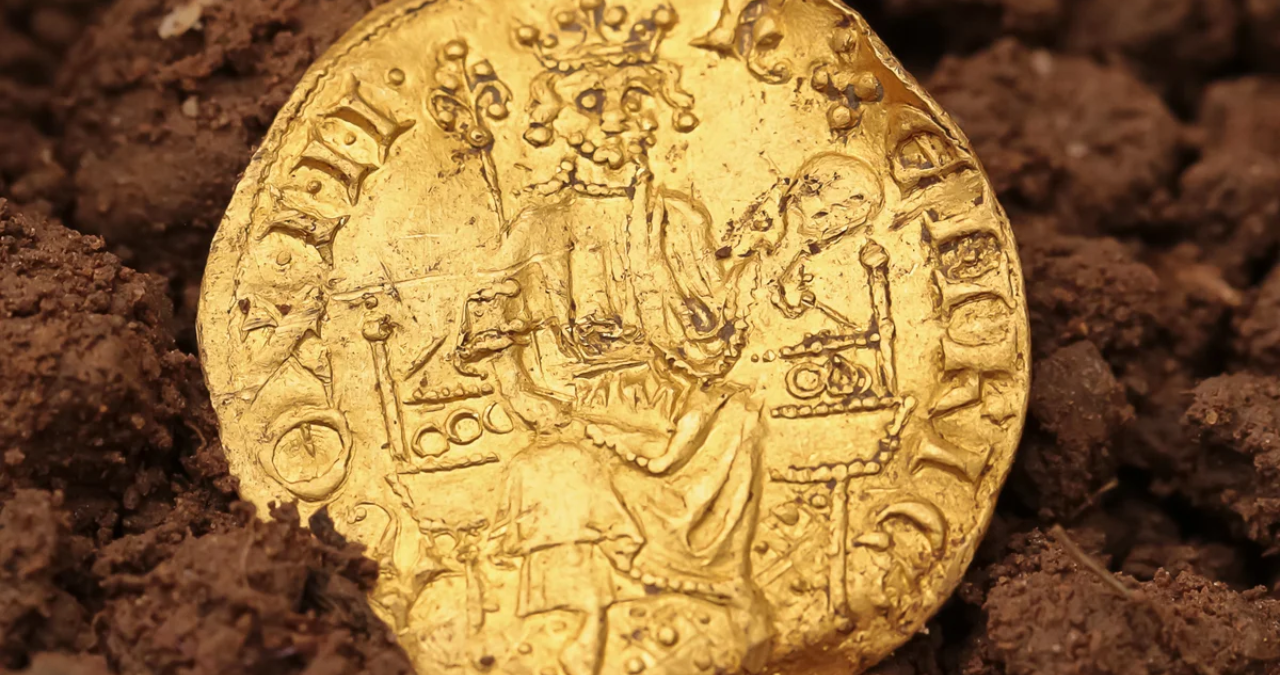For more than two decades, retired builder Paul Capewell had been visiting a field in Cambridgeshire, England, hoping to find something extraordinary. Finally, in November 2022, his patience paid off when he unearthed a rare Roman coin, dating back to AD 107, issued by Emperor Trajan. The coin is expected to fetch up to £6,000 when it goes up for auction at Noonans Mayfair in London.
A Hobby-Turned Treasure Hunt

Paul, a 59-year-old metal detector enthusiast from Nottinghamshire, has been exploring fields with his father for over 40 years. What began as a fun hobby evolved into a passionate search for rare finds. Over the years, he has discovered a variety of coins, including Roman and medieval pieces, but none as rare as the one he recently found.
The field in Little Gransden, where Paul made his significant discovery, had been a regular spot for him to visit. Equipped with his trusty Equinox 800 metal detector, Paul had searched the area many times. On that fateful day, he was on his way back to his car after an uneventful search when he decided to give the area another quick scan. Just 5 meters (16.40 ft) from his car, he received a signal.
Digging to a depth of about 8 inches (20.32 cm), he uncovered a silver Roman coin. Initially, Paul didn’t realize the significance of his find. It wasn’t until he shared photographs with a coin dealer that he learned just how rare the coin was. The coin has now been recorded with the Portable Antiquities Scheme, a program in the UK that helps record and preserve archaeological finds made by the public.
5 Valuable Coins from the 1940s You Might Have in Your Collection
An Unexpected Fortune

The Roman coin, believed to be over 1,900 years old, carries historical significance. Issued during the rule of Emperor Trajan, it marks a period when Trajan called back old Republican coins that were too worn for circulation and replaced them with new currency. Coins like these not only served as currency but also acted as records of the Roman Empire’s achievements.
Nigel Mills, a coins and artifacts expert from Noonans, explained that coins like Paul’s rarely show up at auctions. In fact, only two examples have been recorded for sale in the past 25 years. This makes Paul’s discovery particularly exciting for collectors and historians alike.
Paul, who retired from the construction industry after a heart attack, has shared that he plans to split the proceeds from the sale with the landowner of the field. He also mentioned that he might use his portion of the earnings to buy a new Minelab Manticore metal detector or to help fund his upcoming heart surgery.
A Treasure with History

The Roman coin serves as more than just a collector’s item; it is a piece of history. Coins like these provide insight into the economics, politics, and society of ancient Rome. Many Roman coins circulated for hundreds of years, making their way across the vast empire. They acted as portable records of significant events, like the reigns of emperors, military victories, and even economic reforms.
Experts like Nigel Mills view these coins as vital links to the past. They offer a snapshot of life during the Roman Empire and reveal how far-reaching its influence was. Each coin carries a unique story, not only about the empire but also about the person who found it, adding to its value.
4 Affordable Gold Coins Under $300 That Could Skyrocket to Millions in Value!
The Road Ahead for Paul Capewell
For Paul Capewell, the discovery of this rare Roman coin is the pinnacle of his decades-long hobby. He describes it as his “most exciting find” in 40 years of metal detecting. Now, as he waits for the auction, Paul is excited to see how much the coin will fetch and what new adventures lie ahead.
As his metal-detecting hobby continues, Paul looks forward to future discoveries, and his story serves as a reminder that patience and passion can lead to remarkable findings. Whether he invests in new equipment or uses the money for his health, Paul’s journey as a metal detectorist is far from over.

